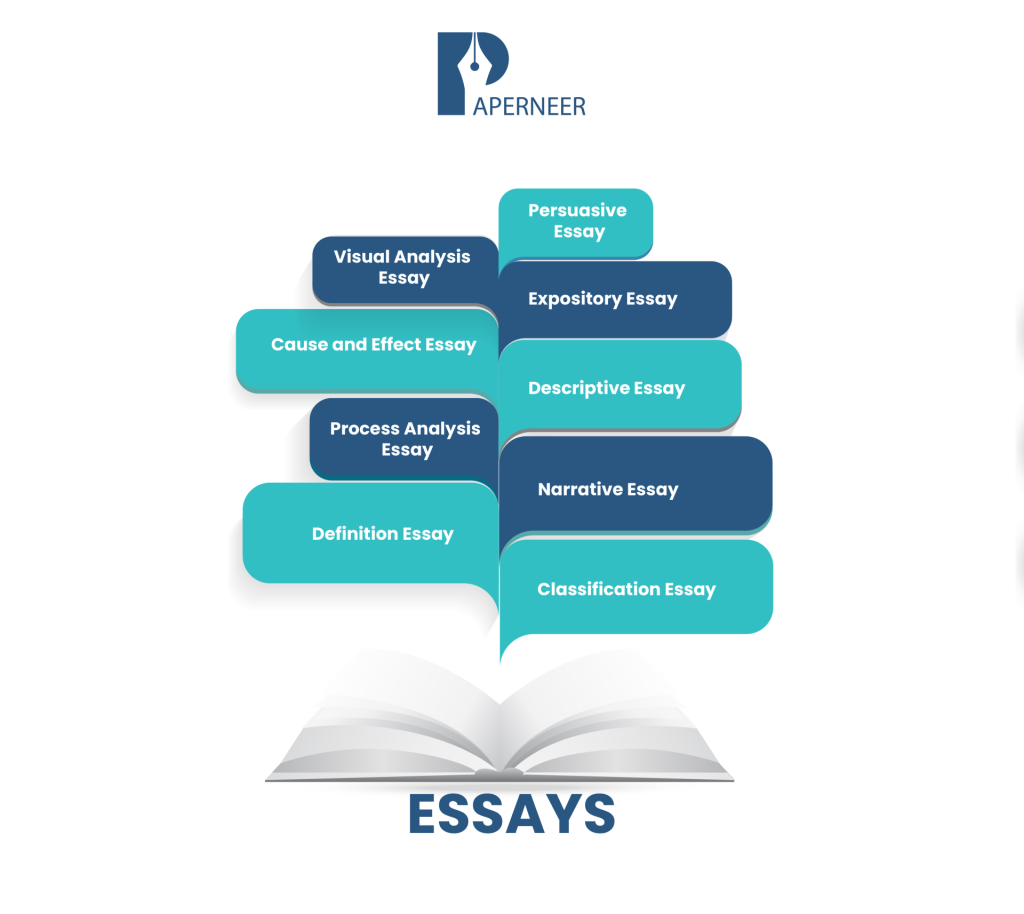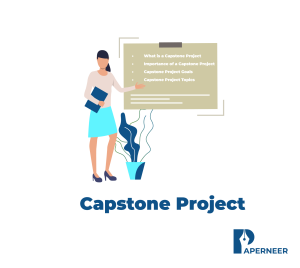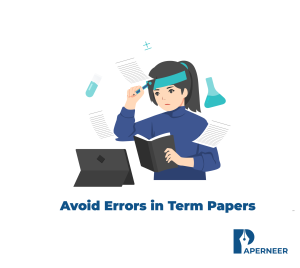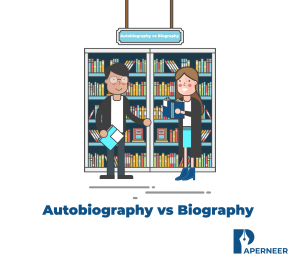Capstone Project – A Complete Guide A capstone project is sometimes the...
Read MoreEssays and their Common Types

Writing is always a fun activity as long as you are assigned to write according to specific instructions and guidelines. In academic writing, one of the most important things to learn is essay writing. However, it is not an easy task to write an essay without knowing its basics. Essay writing is one of the writing activities that has to follow a particular structure and has to serve a purpose. Essays and their common types serve different purposes and possess different characteristics and structures.
This blog brings you different essays and their common types, their structures, and examples.
In this blog, you will find:
Four Main Types of Essays
There are several types of essays, but four common types of essays are as follows:
Persuasive Essay
A persuasive essay is a type of academic writing that aims to persuade or convince the readers with the author’s stance on a topic. The author has to present logical and researched ideas and arguments to sway readers in any way.
For a persuasive essay, the author has to find a controversial point, a point that at least some of your readers will not be inclined to read, to advance an argument. Because argument assumes controversy, you have to work hard to convince readers of the validity of your position.
Persuasive Essay Structure
- Intro paragraph: The introductory paragraph provides a roadmap for developing the debate. It may consist of anecdotes and captivating quotations that can grab the audience’s attention. In addition, it will have the thesis statement in it that the author crafts for the essay.
- Body: This part of the essay consists of several paragraphs and is the most detailed part of the essay. The body will address all the supporting details in well-structured fully developed paragraphs. Each of the body paragraphs should consist of a topic sentence, mostly at the beginning of the paragraphs, that introduces which unique aspect of the topic is going to be discussed in that paragraph.
- Counterargument: In the persuasive essay, this part is an addition and has to present the opposing viewpoints to provide a common ground for discussion over the topic.
- Conclusion: This part sums up the whole essay. In the conclusion paragraph, the thesis statement is restated in different wordings than in the introduction. It should furthermore tell the readers about the importance of the topic under discussion.
Expository Essay
An expository essay explores a topic or issue from various angles with evidence and facts. It provides a balanced viewpoint and analysis of the topic. Unlike a narrative essay and persuasive essay, it does not contain any personal opinion or viewpoint of the author himself, and if in case it contains any, it should be backed by evidence and references. It focuses on objectivity and factual accuracy.
The author has to do thorough research on the materials of this essay and organize them systematically to ensure their coherence. Topics on scientific concepts or historical events can be used for this essay.
Types of Expository Essay
Given below are some types of expository essays:
- Definition Essay
- Classification Essay
- Compare and Contrast Essay
- Cause and Effect Essay
- Process Analysis Essay
Descriptive Essay
A descriptive essay aims to provide a vivid picture to readers’ minds through words. It provides a complete description of the topics with sensory details to engage the human senses. This style of writing needs a keen eye to observe details. It does not only provide detailed descriptions to create an impactful image but also to evoke emotions and memories. For instance, a simple sentence like “the bird flew” could be written as “With its wings spread wide, the bird caught the sunshine and soared across the sky, creating short-lived shadows across the terrain below.”
This essay does not include the writer’s personal opinion in any way. However, his imagination and skill in considering details are needed for this essay type. The description could be of any object, place, event, or person. This essay type can be concise as well as elaborate, depending on the context.
Structure of Descriptive Essay
- Introduction: Start with an engaging hook that could be a vivid image, a question, or a powerful statement. Moreover, include a brief description of the subject you want to consider for your descriptive essay. Provide an overall idea or emotion that will guide your description.
- Body Paragraphs: Provide an overview of the subject in the first body paragraph like a general description of the subject but make sure to use sensory details and vivid imagery. Furthermore, the rest of the body paragraphs will discuss the unique aspects of the subject. Discuss the emotional or symbolic meanings of the subject.
- Conclusion: Concisely describe all the main points of the essay and leave the reader with a lasting impression through your conclusion.
Narrative Essay
A narrative essay revolves around personal experiences and involves storytelling. It aims to provide the readers with nuances of an event or experience, allowing them to enter the author’s world. This type of essay involves depth of words and feelings.
This essay’s writing technique helps turn a life experience into an exciting and captivating tale.
Narrative writing includes vivid and sensory details and is mainly written in chronological order. The stories in these essays can be fictional or non-fictional.
Structure of Narrative Essay
The outline or structure of narrative writing is slightly different from that of other essay writings. Its outline includes typically:
- Introduction: This essay’s introduction, or the beginning, contains a hook and thesis statement, just like all other essays. However, unlike other essays, it would include a setting and characters. The setting refers to the place and time of the event or the happening, and the character relates to the person or people involved. The thesis statement includes the theme or the focused emotion of the story.
- Body: The body paragraphs of this essay include events, conflict, and development. An event refers to the sequence of happenings, which should contain a chronology. Flashbacks and non-linear storytelling could also be used. Conflict refers to the problem or issue that happened to the character. Development refers to the character’s reaction to the happening, event, or issue.
- The climax refers to the turning point or the most crucial moment of the story, where the conflict or the happening reaches its peak. It should be written to be engaging and emotional.
- Conclusion: This provides closure to the story and resolution to the conflict. It may also include the author’s final thoughts about the event.
Visual Analysis Essay
Besides the above-mentioned four common types of essays, a visual analysis essay is also one of the types used in academia and is used greatly.
A Visual Analysis Essay is a type of essay that provides an in-depth description of artworks, photographs, an image, a movie, etc. A visual analysis essay aims to analyze all the visual elements of art, including its color, line, texture, composition, shape, form, value, and many other factors.
Visual Analysis Essay Structure
- Introduction: It includes an introduction where you must provide a brief historical context of the artwork, the artist’s name, the artwork’s name, the date, and the medium. It has to be started with a hook that grabs the reader’s attention. A clear thesis statement must also provide a brief account of your analysis and interpretation of the artwork.
- Body Paragraphs: The essay would further include 2 or 3 Body Paragraphs where you would write about all your analysis and interpretations of the artwork, its elements, meanings, and representations. In body paragraphs, you can make use of contextual analysis of the work, like how the social, political, cultural, and historical factors have been influential to the artwork and how these factors have contributed to the work. Besides this approach, you can use compare and contrast analysis to compare the considered artwork with different artworks.
- Conclusion: The Conclusion aims to sum up the essay and restate the thesis statement. In this part, the critical points of the essay are rewritten. Reflect again on the impact of your analysis and provide an account that leaves an impression on the readers.
Say goodbye to Mistakes in Term Papers
Avoid Errors in Term Papers Writing a theme may be a vital tutorial task that needs careful designing and...
Read MoreUnraveling the Stories: Autobiography vs Biography
Autobiography vs Biography Understanding the excellence between autobiography and biography is crucial for...
Read More



